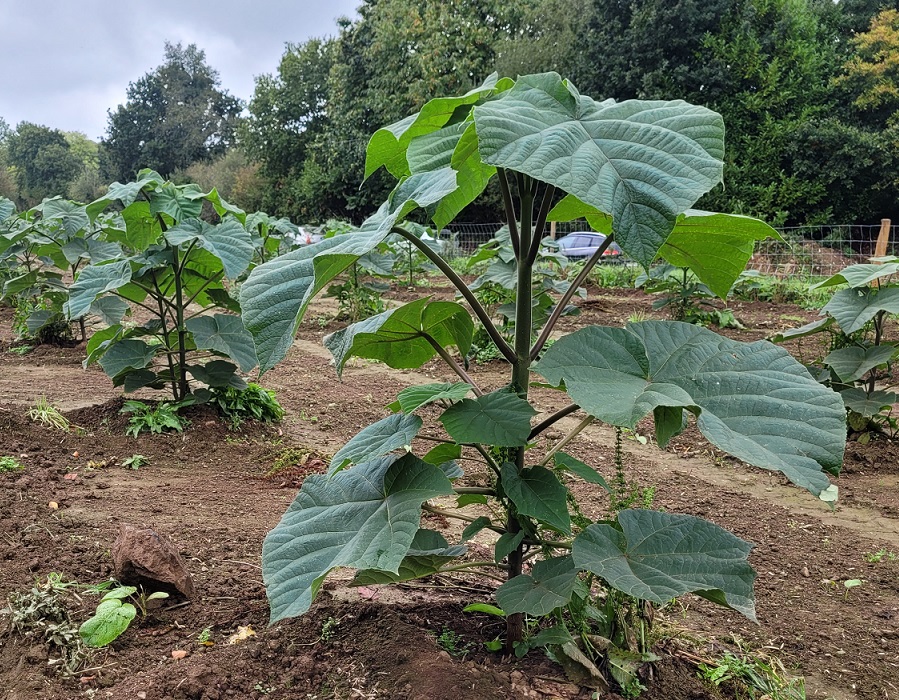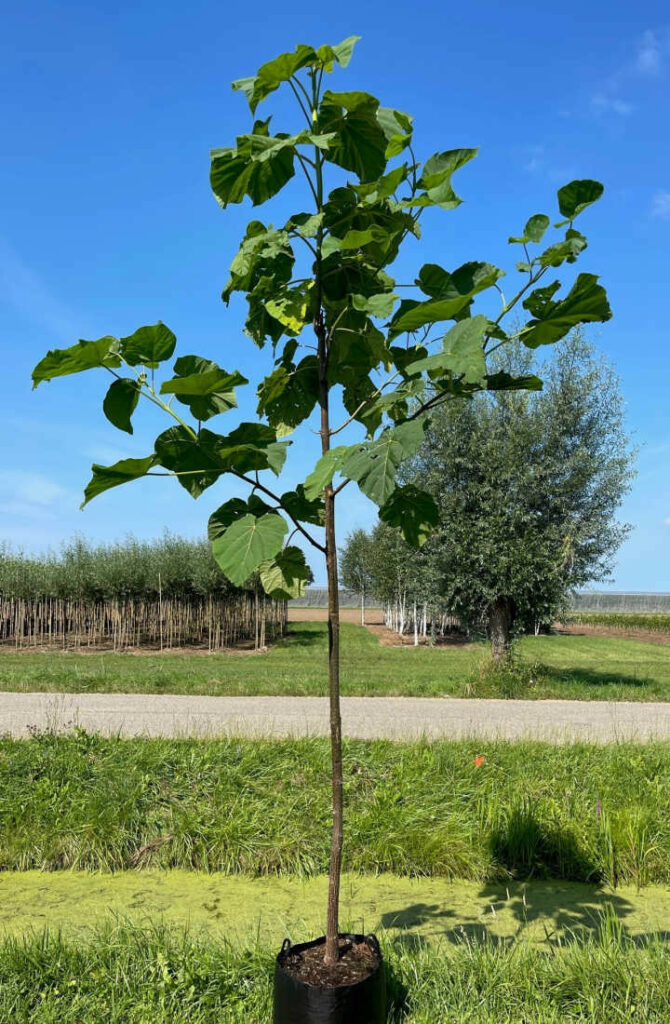PAULOWNIA ESSENTIALS

Origin
Paulownia originated in western and central China, where historical documents describe its medicinal, ornamental and timber uses as far back as the third century BC. It has been cultivated for centuries in Japan, where it is valued in many traditions. It was imported to Europe in the 1830s by the Dutch East India Company and brought to North America a few years later. Paulownia has been naturalized in the eastern United States for over 150 years and is also grown on the West Coast.
What is paulownia?
The paulownia is an extremely fast-growing deciduous tree belonging to the paulowniaceae family. It originated in Southeast Asia, more precisely in China. In its first year, the kiri, as it is commonly called in Japan, reaches a height of 5 meters, a development more typical of a plant than a tree.
What are its properties?
Paulownia has been found to contain substances with beneficial effects on the liver, kidneys and gall bladder; it also acts favorably on lung disease.
Used in Asia for over 1,000 years, paulownia is an excellent insulator, resists high temperatures and burns at almost twice the temperature of many conventional hardwoods and softwoods. In practical terms, it is widely accepted that Paulownia is the tree of the future.

Why plant paulownia?
For the environment:
Paulownia is also a favorite tree species for erosion control. As well as purifying the soil and the water it contains, Paulownia purifies the air of noxious gases, which are often at unacceptably high concentrations, particularly in large industrial cities. Paulownia absorbs 10 times more CO2 than any other tree species, releasing large quantities of O2. Human activity, the power industry, heavy traffic, etc. cause a rapid build-up of CO2 in the air, which in turn leads to global warming, melting polar ice and flooding of the land. From the mid-19th century to the present day, CO2 levels have risen by over 25%. Prior to this, these levels had not been reached for 1.6 million years. Growing Paulownia over large areas helps to eliminate some of the CO2. At the end of 1994, scientists discovered that most of the Earth’s dioxides are absorbed by younger tree plantations than older ones. With the planting of 4 hectares of new areas with Paulownia, the absorption of 13 tonnes of CO2 from the air per year is ensured.
For the wood:
The first thing that strikes you about paulownia wood is its remarkable lightness. This is why it is preferred for the manufacture of parts where low weight is essential, namely aircraft structures and parts for furniture construction in general.
Another very interesting aspect is paulownia wood’s low moisture content and low fire risk (due to its very low resin content). With a moisture content of around 10-12%, it barely absorbs water, so pieces made from it don’t warp when exposed to moisture like other wood pieces usually do.
We should also mention that paulownia wood is not attacked by termites.
What are the disadvantages of Paulownia?
There are many problems with Paulownia tomentosa.
Although its flowers are beautiful, harsh winters freeze and often kill the young, developing flower buds, leaving the tree no choice but to grow faster and drop more branches. Paulownia tomentosa is listed as harmful and banned in Connecticut.
How long does a paulownia last?
The princess tree is part of its own family (Paulowniaceae) and is also called the empress tree or royal paulownia. This deciduous tree grows up to 100 feet high and has a lifespan of 70 to 125 years.
